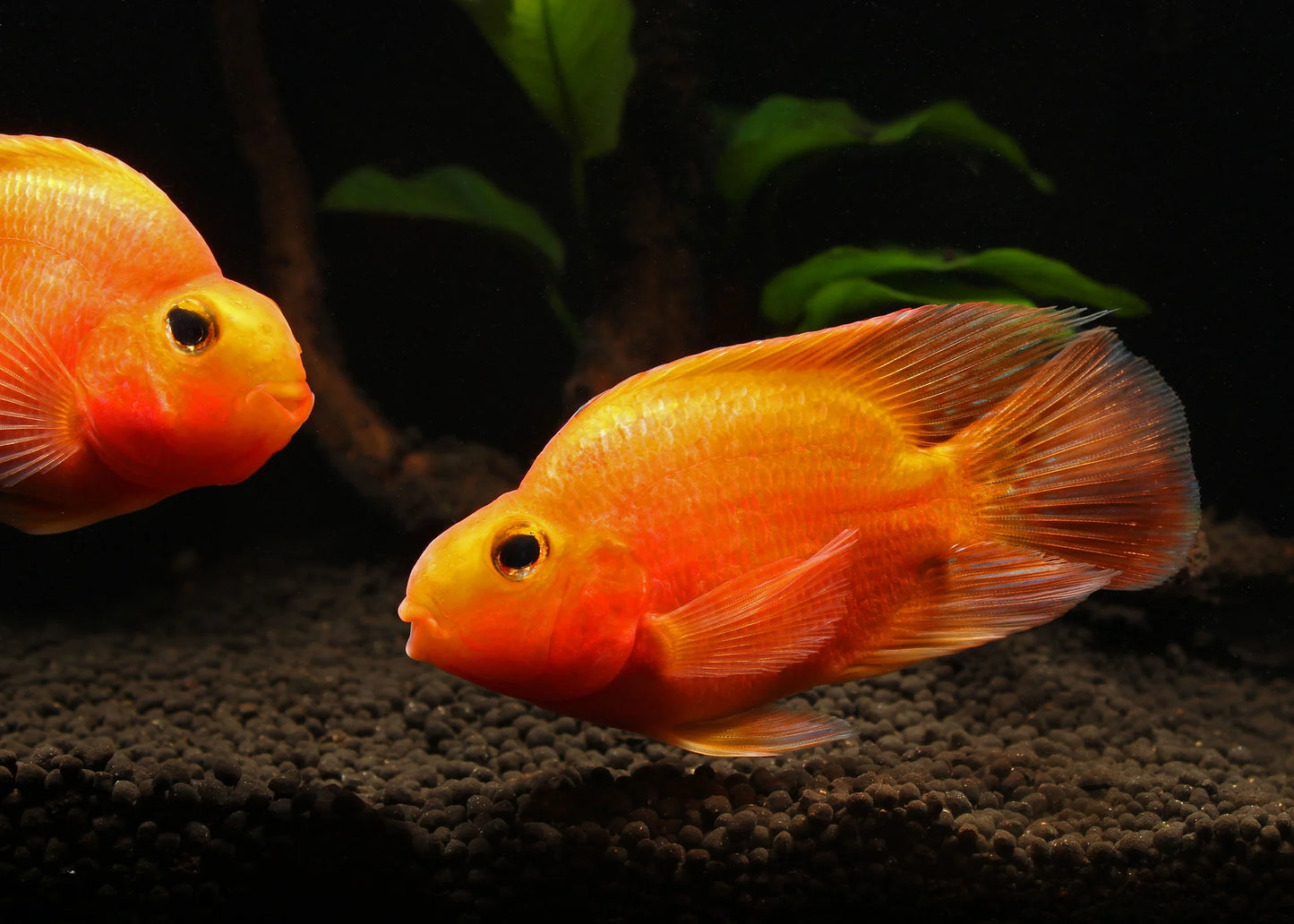1
/
of
1
Fish & Bird Emporium
Blood Red Parrot fish
Blood Red Parrot fish
Regular price
34.99
Regular price
Sale price
34.99
Unit price
/
per
Couldn't load pickup availability
| Synonyms | N/A |
| Distribution | Man-made hybrid; not present in nature. |
| Maximum Size | 25cm (9.8") |
| Temperature | 22-28°C |
| Water Parameters | Will acclimatise to a wide range of conditions. pH: 6.0-8.0, dH: up to 25 degrees. |
| Compatibility | Community with no small fish |
| Lighting | No special requirements |
| Sexual Dimorphism | Difficult - males may show heightened colour around the gills and throat area. |
| Feeding | Flake, granules, cichlid pellets and frozen foods |
In the captivating world of aquatics, tropical fish do not come much more controversial than the Red Parrot Cichlid. This man-made hybrid is quite the 'Marmite fish' - people tend to either love 'em or hate 'em. The parentage of these bright orange fish has always been something of a closely guarded secret, but when they were first glimpsed during the 1980s, there was much speculation that they were a cross between the Severum (Heros severus) and the Red Devil (Amphilophus labiatus). Both of those species were, at the time, classified in Cichlasoma, so at that time a hybridisation between two fish of the same genus was, perhaps, not all that surprising. But both fish were later reclassified into separate genera, which made the breeding then somewhat unexpected and a little contentious. Since then, other parent species have been suggested, such as a cross between the Midas Cichlid (Amphilophus citrinellus) and the Redheaded Cichlid (Vieja synspila); yet others feel the Convict Cichlid (Amatitlania nigrofasciata) is involved somewhere along the lines. Whatever the parentage, and love them or hate them, it seems that these fish are here to stay in the fishkeeping hobby. Red Parrot Cichlids have a roundish shaped body that is somewhat unnatural and akin to some of the balloon mutations bred in various other fish in recent years. It is thought that these hybrid fish have been further line bred for this mutation (as a straightforward hybrid will not necessarily result in deformed spines every time), and this has also resulted in large eyes and a very small mouth that resembles a parrot's beak. The mouth is usually unable to fully close, giving the fish a slightly comical, smiling appearance. They are usually an all-over solid orange-red colour, but calico or paler variants are sometimes available.
Share


